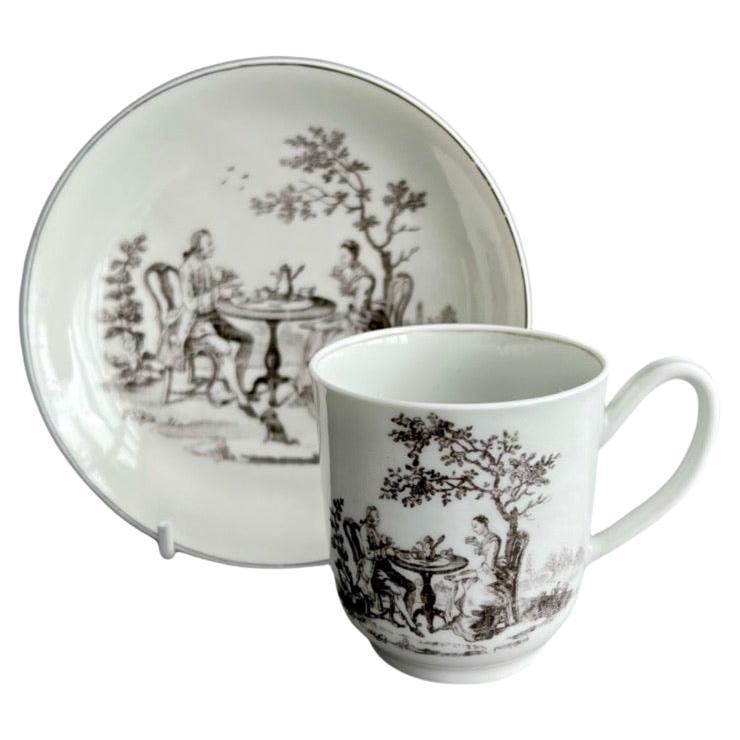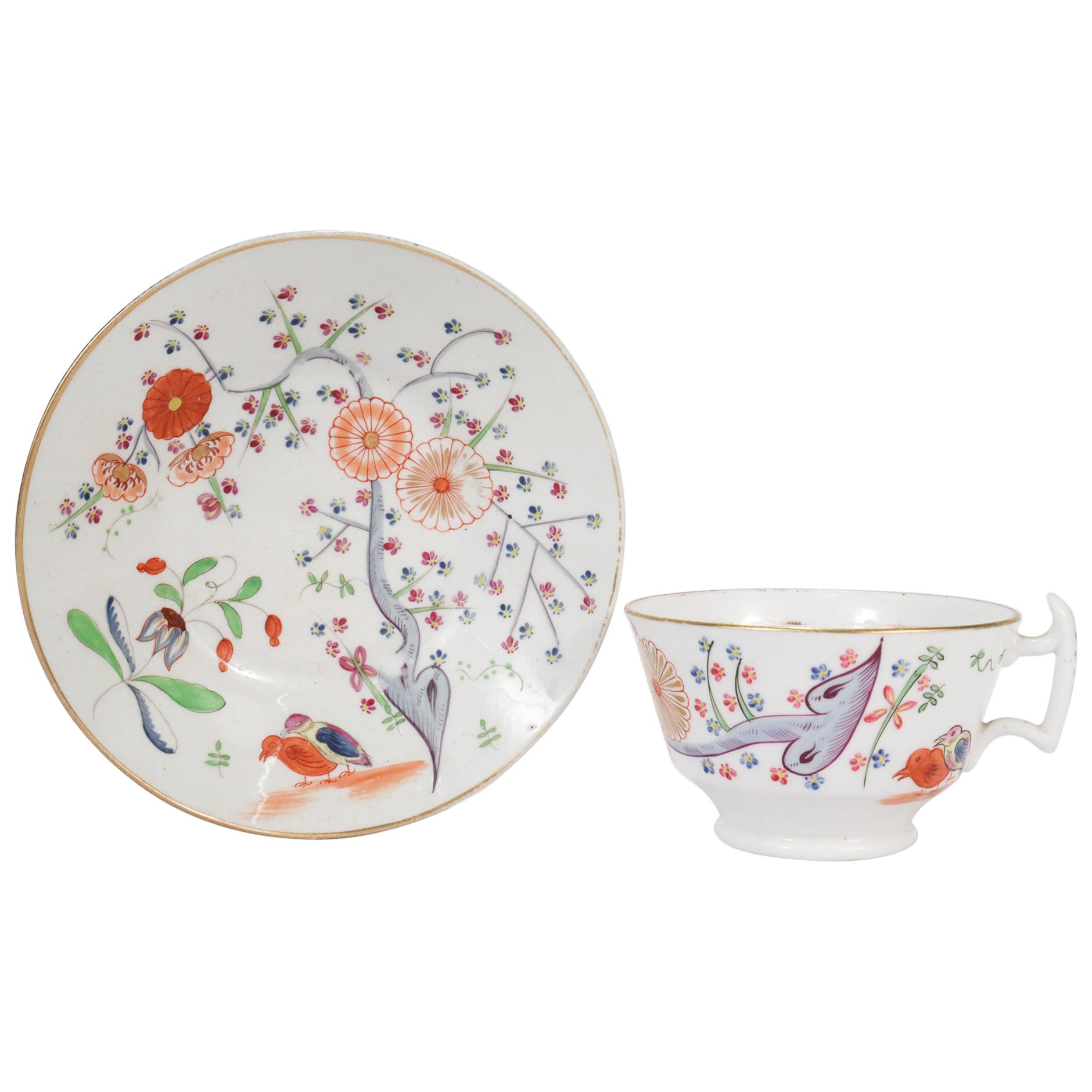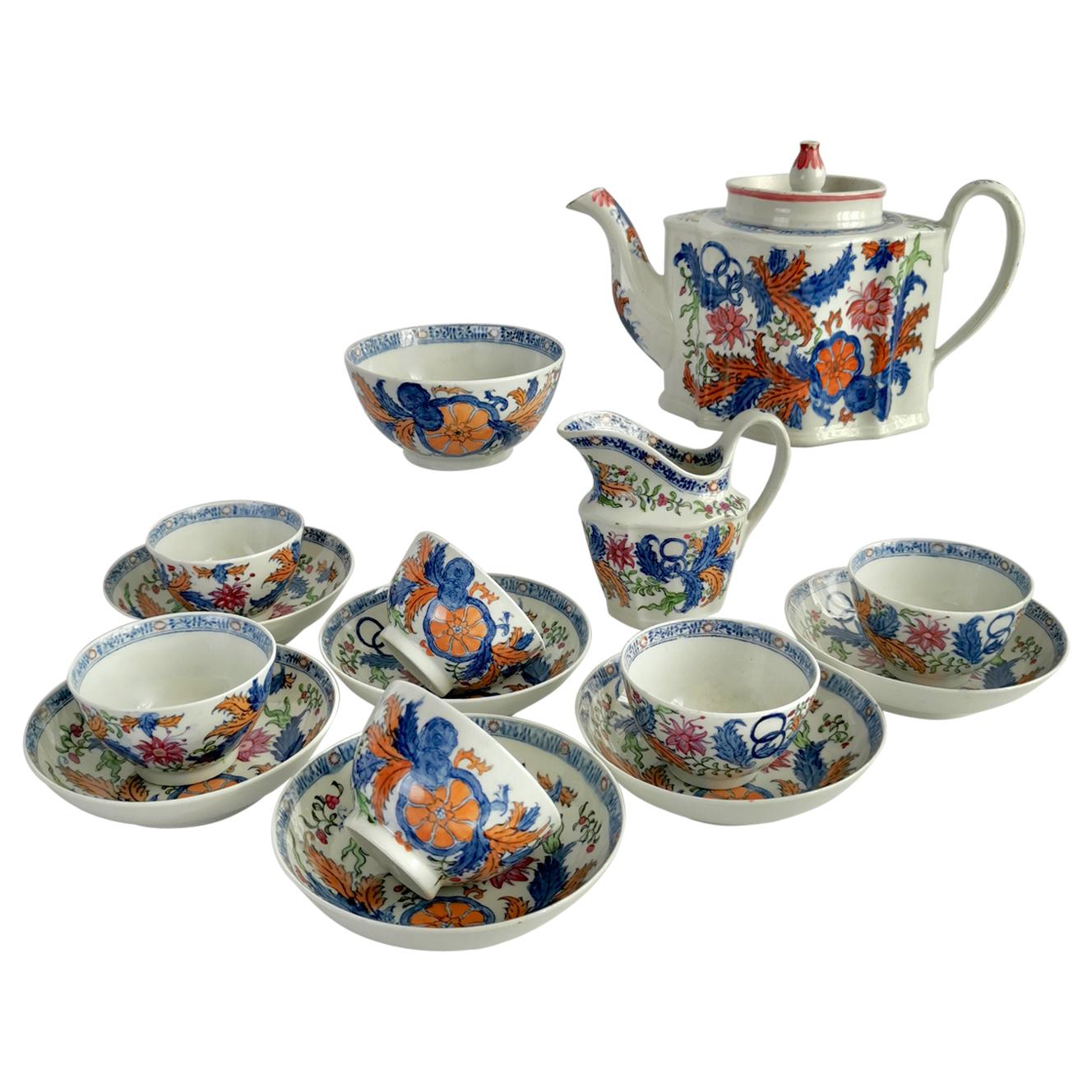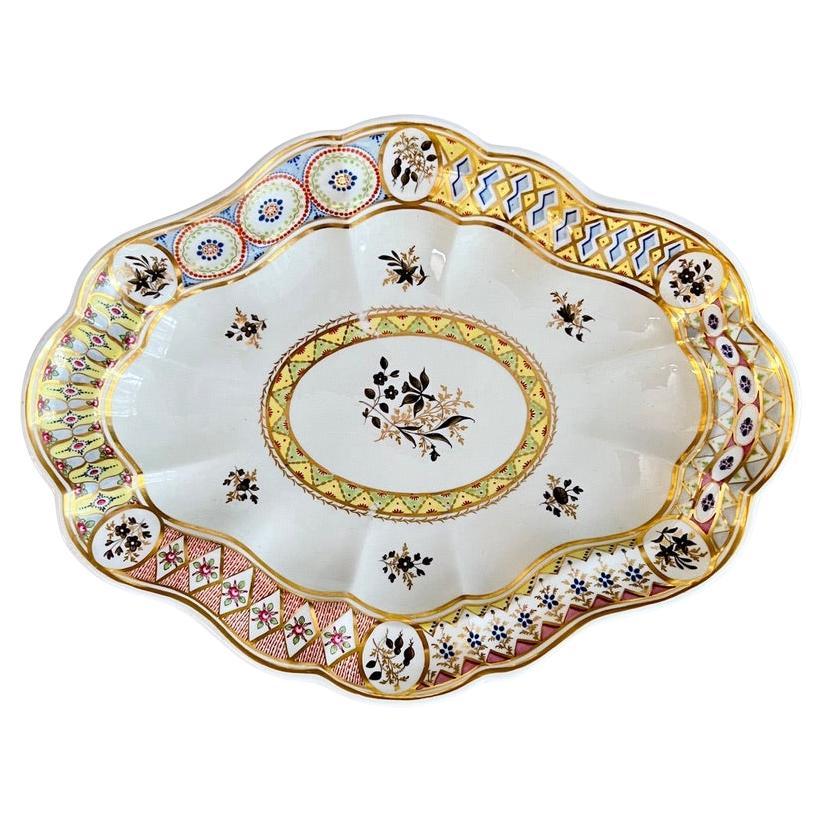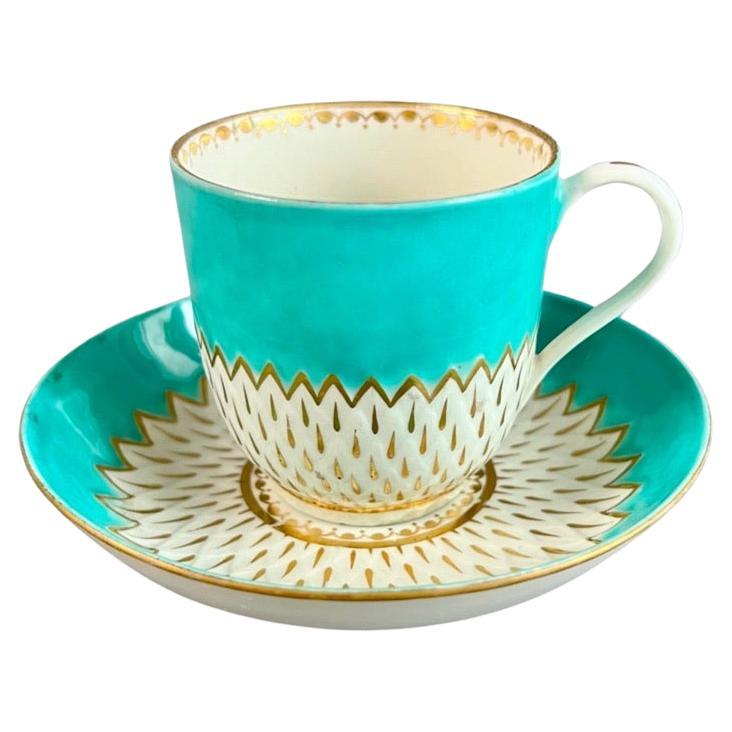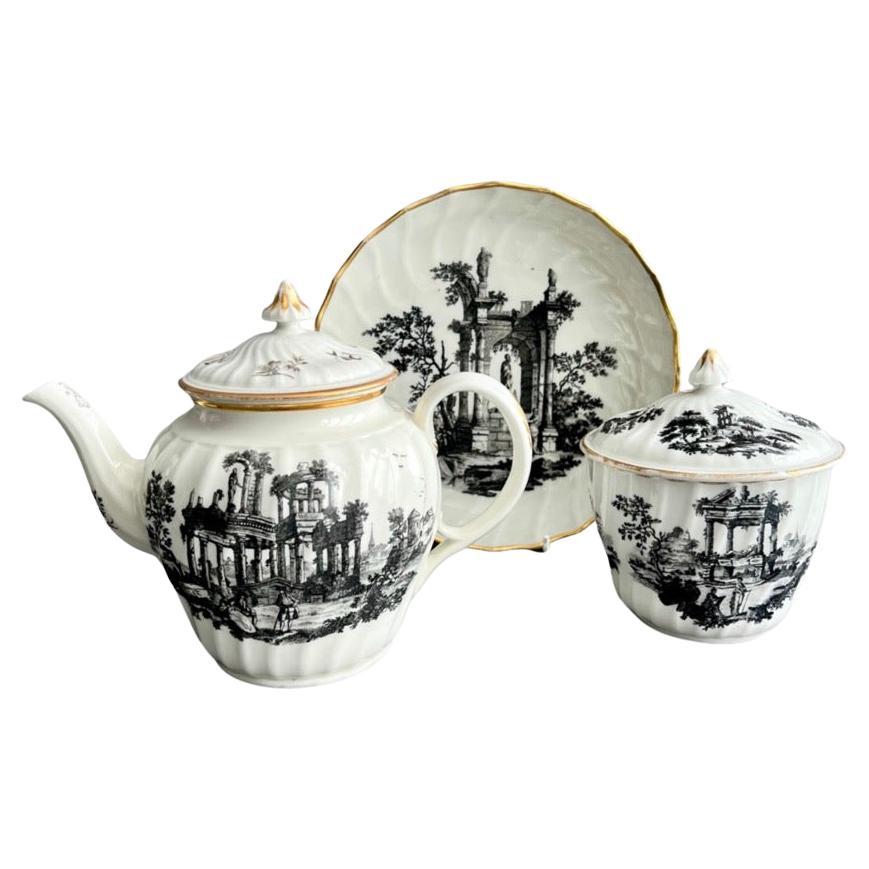Items Similar to Chamberlains Worcester Orphaned Coffee Cup, Sepia Flower Sprays, Georgian ca1795
Want more images or videos?
Request additional images or videos from the seller
1 of 15
Chamberlains Worcester Orphaned Coffee Cup, Sepia Flower Sprays, Georgian ca1795
About the Item
This is a beautiful orphaned coffee cup made by Chamberlains Worcester in about 1795. The cup has a spirally fluted or shanked shape and is decorated with graceful sepia and gilt flower sprays.
The cup has lost its saucer but is still wonderful by itself, and would hold just one double espresso or a little machiato.
The Chamberlain factory was founded in the 1780s by Robert Chamberlain, who was responsible for the decoration department in the famous Worcester pottery during the Dr Wall period. He set up his own factory with his son Humphrey, initially buying up stock from Turner's Caughley factory for decoration, but then around 1794 starting to produce their own porcelain. By the year 1800 they had built up a strong reputation, producing wonderful tea and dinner ware for the British and European nobility and becoming a mighty competitor of both the Worcester/Flight & Barr and Grainger factories. In the 1840s the factory merged back with Worcester, which later also bought Grainger and was formed into the later Royal Worcester.
The cup is not marked, as is common for the period.
CONDITION REPORT The cup is in excellent antique condition without any damage, repairs, crazing or significant wear. There are some firing imperfections, as can be expected from an item of this era.
Antique British porcelain is never perfect. Kilns were fired on coal in the 1800s, and this meant that china from that period can have some firing specks from flying particles. British makers were also known for their experimentation, and sometimes this resulted in technically imperfect results. Due to the shrinkage in the kiln, items can have small firing lines or develop crazing over time, which should not be seen as damage but as an imperfection of the maker's recipes, probably unknown at the time of making. Items have often been used for many years and can have normal signs of wear, and gilt can have signs of slight disintegration even if never handled. I will reflect any damage, repairs, obvious stress marks, crazing or heavy wear in the item description but some minor scratches, nicks, stains and gilt disintegration can be normal for vintage items and need to be taken into account.
There is widespread confusion on the internet about the difference between chips and nicks, or hairlines and cracks. I will reflect any damage as truthfully as I can, i.e. a nick is a tiny bit of damage smaller than 1mm and a chip is something you can easily see with the eye; a glazing line is a break in the glazing only; hairline is extremely tight and/or superficial and not picked up by the finger; and a crack is obvious both to the eye and the finger. Etcetera - I try to be as accurate as I can and please feel free to ask questions or request more detailed pictures!
DIMENSIONS (diameter) 6.5cm (2.5").
- Creator:Chamberlains Worcester (Maker)
- Dimensions:Height: 1 in (2.54 cm)Diameter: 2.5 in (6.35 cm)
- Style:George III (Of the Period)
- Materials and Techniques:
- Place of Origin:
- Period:1790-1799
- Date of Manufacture:circa 1795
- Condition:Wear consistent with age and use. In excellent antique condition without any damage, repairs, crazing or significant wear; some firing imperfections.
- Seller Location:London, GB
- Reference Number:
About the Seller
5.0
Platinum Seller
These expertly vetted sellers are 1stDibs' most experienced sellers and are rated highest by our customers.
Established in 2016
1stDibs seller since 2019
208 sales on 1stDibs
Typical response time: <1 hour
- ShippingRetrieving quote...Ships From: London, United Kingdom
- Return PolicyA return for this item may be initiated within 14 days of delivery.
More From This SellerView All
- Worcester Coffee Cup, Monochrome Black Print "Tea Party no.3", Georgian ca 1760By 1st Period Worcester Dr. WallLocated in London, GBThis is a very charming coffee cup and saucer made by Worcester in their First Period (sometimes called the Dr Wall Period) in about 1760. The items are decorated in a black overglaz...Category
Antique 1760s English George III Porcelain
MaterialsPorcelain
- New Hall Porcelain Tea Service, Chinoiserie Flower Sprays, Georgian, circa 1795By New HallLocated in London, GBThis is a stunning tea service made by New Hall in circa 1795. The service is made of hybrid hard paste porcelain and decorated in a bold Chinoiserie pattern of large flower sprays. The service consists of a teapot with cover, a milk jug, a slop bowl, and six tea bowls with saucers. This service has provenance; it came from the collection of David Redstone, the well known porcelain expert who wrote leading books on Bow and Chelsea porcelain. The New Hall factory started as a cooperative of several Staffordshire potters making use of the porcelain license of Bristol Porcelain...Category
Antique 1790s English George III Tea Sets
MaterialsPorcelain
- Chamberlains Worcester Oval Dish, Harlequin Pattern in Style of Donegal, ca 1795By Chamberlains WorcesterLocated in London, GBThis is a beautiful and intriguing porcelain dish made by Chamberlains Worcester in about 1795. The dish has a "harlequin" pattern with six different rim motifs in the style of the f...Category
Antique 1790s English George III Serving Bowls
MaterialsPorcelain
- Derby Porcelain Coffee Cup, Artichoke Pattern in Turquoise, Georgian ca 1785By DerbyLocated in London, GBThis is a beautiful coffee cup and saucer made by Derby in about 1785. The set has the distinctive "artichoke" moulding and a bright turquoise ground with the white artichoke surface...Category
Antique 1780s English George III Tea Sets
MaterialsPorcelain
- Flight Worcester Teapot Set, Monochrome Print "Ruins" Pattern, Georgian ca 1790By Flight WorcesterLocated in London, GBThis is a beautiful set of a teapot, a sucrier with cover, and a plate made by Worcester in its Flight period, around 1790. You can tell from the generous size of the teapot that it ...Category
Antique 1790s English George III Porcelain
MaterialsPorcelain
- Derby Orphaned Coffee Can, White, Landscape by Zachariah Boreman, ca 1790By DerbyLocated in London, GBThis is a very rare and stunning little orphaned coffeecup made by Derby in about 1790. The cup has a white ground, simple gilt rims and a stunning named mountain landscape painted by Zachariah Boreman. The Derby factory, later reshaped into Royal Crown Derby, is currently the oldest British porcelain factory still in production. Derby was one of the most prominent potteries right from the start of English porcelain production in the mid 1700s to today. Their items are of exceptionally high quality and many of the designs have become iconic, particularly the Imari designs; many of these are still being made today. Derby made many exciting designs in the Regency era, and this cup, which would have belonged to a large tea service, is a beautiful example. The marking at the underside indicates that the cup was produced some time between 1782 and 1800, however the style is from the mid-1790s. Zachariah Boreman was one of the most celebrated painters at Derby. He arrived at Derby around 1774 after working at Chelsea, and remained until 1794, when he left in frustration with Michale Kean, the owner. Even though Boreman became one of the prime landscape painters at Derby, Kean would not pay him more and this caused Boreman to go back to London and work for the Simms decorating studio. Boreman was most probably influenced by Paul Sandby, the chief drawing...Category
Antique 1790s English Georgian Tea Sets
MaterialsPorcelain
You May Also Like
- Antique 19th Century Chamberlain Worcester Quails Patter Porcelain Cup & SaucerBy Chamberlains WorcesterLocated in Philadelphia, PAA fine antique English porcelain cup & saucer. In the Quail pattern. By Chamberlain Worcester. With painted green, blue, and red painte...Category
Antique Early 19th Century English Georgian Porcelain
MaterialsPorcelain
- Chamberlains Worcester Plate Porcelain Dragon in Compartments Ptn. 75, Ca 1800By Chamberlains WorcesterLocated in Lincoln, LincolnshireThis is a good quality porcelain Plate or Dish, all hand painted in the Dragon in Compartments pattern, Number 75, by Chamberlains Worcester, dating to the George 111rd years, circa ...Category
Antique Early 19th Century English George III Ceramics
MaterialsPorcelain
- A Chamberlain Worcester Sir John Hullock Breakfast Cup & SaucerBy Chamberlains WorcesterLocated in Exeter, GBA fine and rare Chamberlain Worcester 'Baden' shape breakfast cup and saucer decorated in pattern 864 with the crest of Sir John Hullock c.1815. An ostri...Category
Antique 19th Century British Porcelain
MaterialsPorcelain
- Set of Six 18th Century Flight Worcester Porcelain Tea Cups and SaucersBy Flight, Barr & Barr WorcesterLocated in Philadelphia, PAA set of six antique Flight Worcester porcelain cups and saucers. Each with a ribbed swirl design and cobalt blue and gold floral sprig and garland decoration. Each base is mar...Category
Antique Late 18th Century Great Britain (UK) George III Porcelain
MaterialsPorcelain
- Chamberlain's Worcester Porcelain Hand Painted Part Tea SetBy Chamberlains WorcesterLocated in East Geelong, VICThis Chamberlain's Worcester porcelain hand painted and gilded tea set consists of 31 pieces- a teapot and stand, a lidded sugar box, milk jug, slop bowl, two cake plates and twelve tea bowls and twelve saucers. The pattern, 351, on Chamberlain's New Oval shape, has retained its vibrancy of colour, but the gilding on the handles shows some wear. Four of the pieces have sustained some damage, the most obvious is to the tip of the teapot spout which has been fitted with a metal collar so that it can still pour. There are also two small chips to the inside rim of the pot. The sugar box as a chip to the base and another to the underside of the lid. One of the plates has a star crack to the base, and one of the teabowls has a crack. The milk jug has a shallow firing crack to the inside, but this was filled with glaze in the factory. Apart from the pattern number, the set is unmarked. However, the pattern is shown in plate 239 of Berthoud's "Compendium of British Cups". The teapot corresponds with plate 1001 of Berthoud's "Directory of British Teapots...Category
Antique Early 1800s English Georgian Tea Sets
MaterialsPorcelain
- Early Derby Porcelain Coffee Can att. to George Robertson, circa 1795By George Robertson, DerbyLocated in Fort Lauderdale, FLA green-ground porcelain coffee can made by the Derby Porcelain Factory circa 1795. This green-ground coffee can is a fine example of early Derby porcelain...Category
Antique 1790s English Georgian Porcelain
MaterialsPorcelain
Recently Viewed
View AllMore Ways To Browse
Georgian Flower
Coffee Cup Set
Tea Set For One
Antique Tea Cans
Flowers Used For Tea
Dining Set Georgian
Tea Cups Antique
Antique Tea Cups
British Georgian
Antique Tea Sign
Coffee And Tea Cups
Antique Coffee Items
Antique Silver Tea Cups
Antique Glass Tea Cups
Antique Coffee And Tea
Antique Cup And Saucer Sets
Antique Tea Cup Sets
Antique Tea Cup Set
